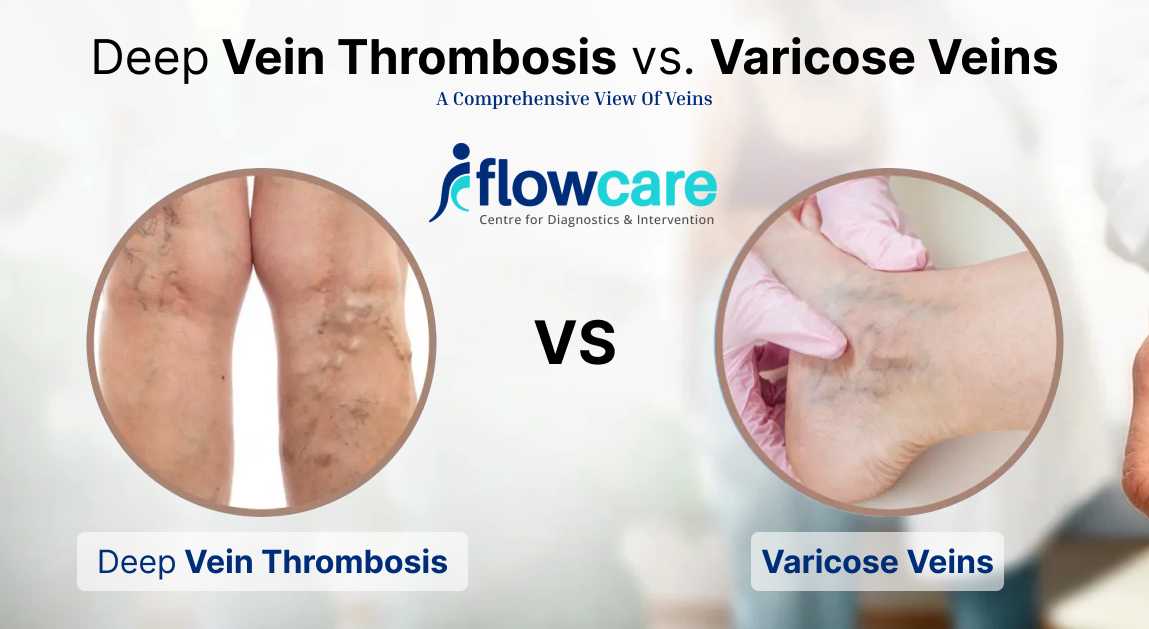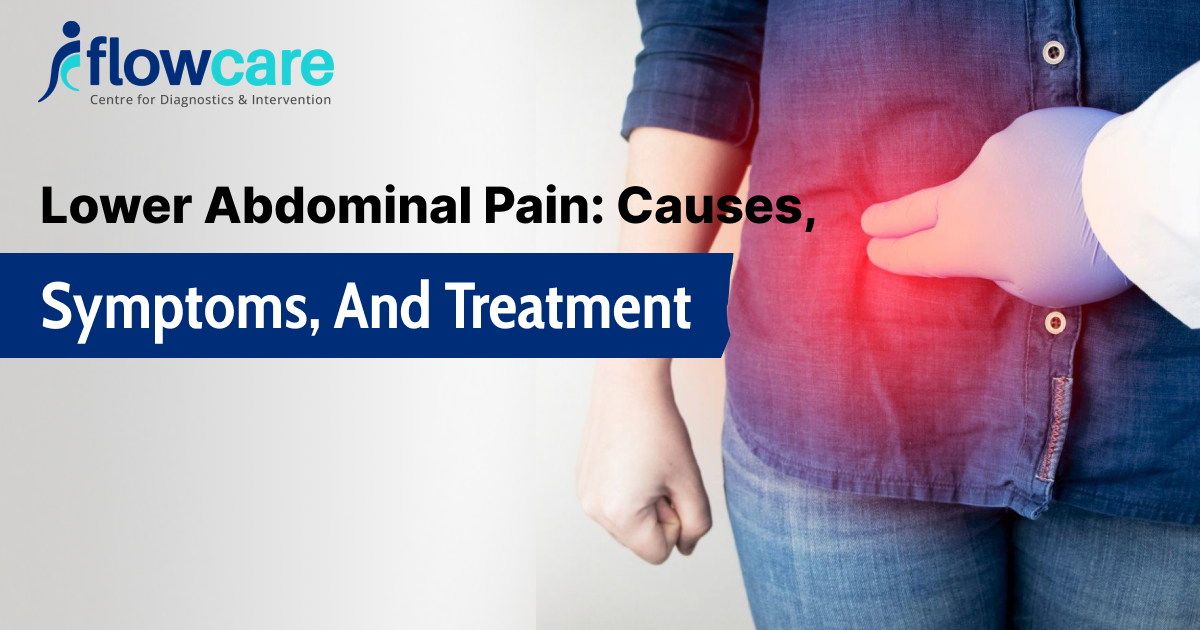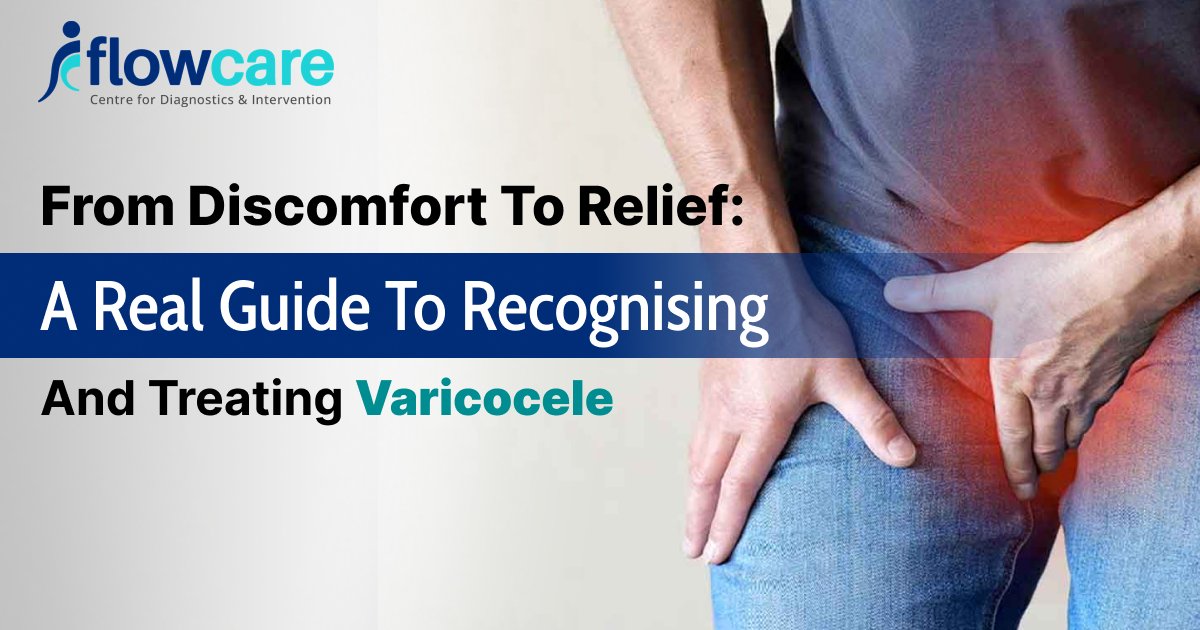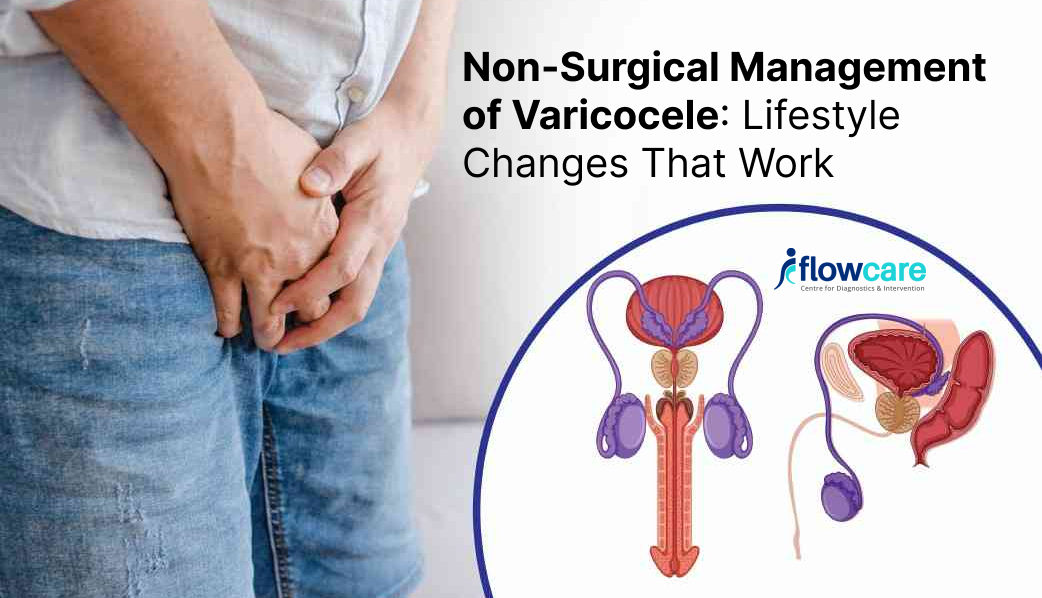
Deep Vein Thrombosis vs. Varicose Veins
Individuals having any kind of vein issues often come across with the terms “deep vein thrombosis” and “varicose veins”. Though, they seem similar yet differ in terms of their causes, symptoms and overall impact. Both conditions involve the veins issue but in varicose veins, veins just underneath the skin surface get affected and in DVT veins deep in the tissues get affected.
To get the right diagnosis, it is essential to understand how both conditions work in detail. This blog will help you understand each term in detail along with its causes, symptoms, and treatments.
A Comprehensive View of Veins
Before diving into the details of these conditions, let’s start with the what is vein system. Veins are part of the circulatory system which is responsible for returning blood to the heart after it successfully delivers oxygen and other nutrition to the other parts of the body. This vein system has a valve that functions to stop the blood flowing backwards. It allows blood to flow in the direction of the heart.
Deep vein thrombosis and varicose veins can be brought on by problems with the vascular system, such as blood clots or valve damage.
What is Deep Vein Thrombosis (DVT)
Deep Vein Thrombosis (DVT) occurs when a blood clot develops in the deep vein, especially in the legs. A blood clot is a cluster of blood that turns into a solid form. These clots in DVT develop beneath the deep veins in the muscles. This formation is more threatening than those on the surface veins.
In DVT, blood clots can impact the blood flow partially or entirely. This can cause pain, swelling and other threatening conditions. One of the threatening conditions that can occur due to DVT is blood clots could break or become loose. If blood clots become loose or break then they could travel to the bloodstream and reach to lungs, known as a pulmonary embolism. It is a life-threatening condition since it could create difficulty in breathing.
Causes of DVT
- Sitting or standing for too long could impact the blood flow and cause it to slow.
- Injury or major surgery especially on legs or veins could cause blood clots to form.
- Genetic factors could also contribute to the forming of blood clots.
- The pregnancy period puts pressure on the legs and could also create issues in the veins.
- Contraceptive pills and chemotherapy drugs are a few of causes of DVT
- Obesity is also one of those factors that could add pressure to the legs and cause vein issues.
Symptoms of DVT
DVT symptoms can be noticed on the lower body precisely on the legs, thighs, and pelvis area. However, in many cases, individuals do not feel any symptoms at all. Feeling no symptoms at all could also happen in this condition.
- Swelling: The swelling occurs in one leg and could feel warm on touching
- Pain: A pain like cramps could occur very often
- Discolouration: This usually occurs on the skin of the affected area in which the skin turns reddish or bluish.
If any of these symptoms occurs after a surgery or injury then contact your medical professional on an immediate basis.
Risk Factors
Individuals with these factors can develop the DVT at high chances
- Older age
- Genetic blood clotting disorder
- History of blood clots
- Pregnancy
- Diseases such as lupus, cancer, and heart disease.
What Are Varicose Veins
Varicose veins usually occur under the surface of the leg’s skin and include enlarged and twisted veins. They could be slightly uncomfortable and can put emotional stress on the individual. However, generally, they are not considered threatening or dangerous.
This condition occurs when valves in the vein system become damaged. These valves are responsible for ensuring blood flowing in one direction but damaged valves fail to perform this function and cause blood to pool in veins. This causes veins to become enlarged and swollen.

Causes Of Varicose Veins
The exact reason for damaged valves is unknown but there are several factors that are responsible for malfunction of vein valves.
Genetic
Individuals with family history of varicose veins are more vulnerable to develop it in future.
Prolonged Sitting or Standing
If individual is involved in activities like prolonged sitting or standing, they have higher chances of developing it as
Hormonal Change
Sudden hormonal change during pregnancy or menopause can also impact the vein walls and cause varicose veins.
Risk Factor of Varicose Veins
Risk factors meant factors the prone to develop the issue:
- Obesity: Like DVT, individuals who are overweight have more chances to varicose veins.
- Older Age: Individuals with older age lose elasticity in their veins which directly impacts the valve system.
- Smoking: Individuals with smoking habits have higher chances of developing varicose veins.
Symptoms of Varicose Veins
Visible Veins: Veins are usually blue or dark purple and look twisted and clearly visible on the skin of legs.
Feeling Of Tiring: Legs may feel tired or ache after sitting and standing for a long time or especially standing for a long time.
Swelling: Fluid cam build up at the end of the day especially at the ankles and feet area.
Ulcer or discoloration: Affected areas can get discoloured and may develop ulcer.
Treatment of DVT and Varicose Veins
Deep Vein Thrombosis
Medication: One of the most effective treatments of DVT is blood thinner medication that prevents further blood clotting.
Compression Stocking: This helps in reducing swelling and promotes better blood flow.
Thrombolysis or thrombectomy: In some cases, catheter is inserted in affected veins to dissolve clot or to remove blood clots. In cases where chances of clot migration are high, IVC filter is inserted to prevent pulmonary thromboembolism.
Varicose Veins
- Compression Stocking: Like DVT, varicose veins can also be treated with this technique.
- Lifestyle modification: Increase physical activity, no prolonged standing and balanced diet to manage the symptoms.
- Medication: Flavonoids are given to reduce inflammation and improve valve function. Analgesics are also given to relieve pain.
- Endovenous laser ablation or RFA: Minimally invasive ablation techniques are very effective in advanced cases of varicose veins.
- Surgery: It will remove the affected veins but nowadays are obsolete due to its risk and lot of scar.
- Minimal-invasive surgery options like sclerotherapy.
Conclusion
In summary, varicose veins and (DVT) are two distinct medical illnesses that affect veins. Varicose veins are usually a cosmetic concern that may be addressed for comfort or appearance, while DVT is a potentially fatal condition that needs immediate attention. However, varicose veins could be a slightly painful and discomfort condition for some individuals. Knowing each condition’s symptoms can help you take the appropriate action to safeguard your health and wellbeing. Always seek the advice of a healthcare professional to make sure you receive the right treatment. If you are suffering from any symptoms mentioned above then seeking medical attention should be your priority.
But if you are wondering where to get a reliable medical professional that can give you the best advice and consultation then Flowcare’s Dr. Rajendra Bansal could be a top-notch choice. He holds an extensive experience of more than 10 years and successfully managed over 5000 cases with a high successful rate.






